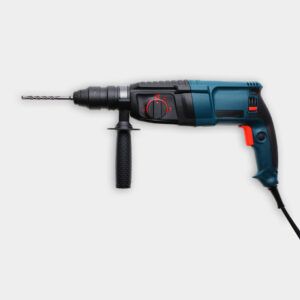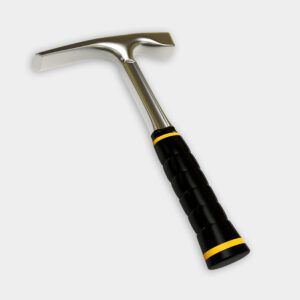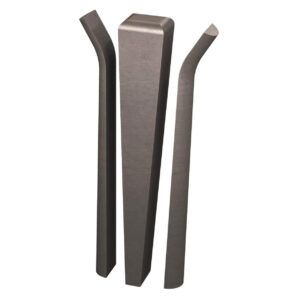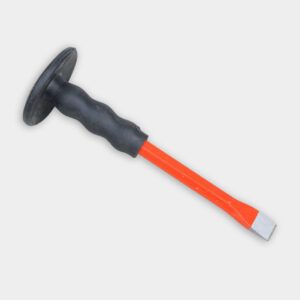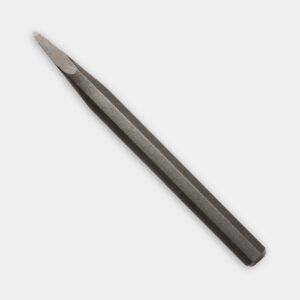We may be compensated if you purchase through links on our website. Our team is committed to delivering honest, objective, and independent reviews on home products and services.
Plenty of home projects require cutting stone, whether you’re laying natural stone tiles or applying stone veneer to a wall or fireplace. Power tools can be incredibly helpful for these tasks, but hand tools offer more precision and control. In the video above, Ask This Old House mason Mark McCullough explains several methods for cutting stone using hand tools. We also cover safety precautions and techniques below.
Stone Cutting Safety
Working with stone can be dangerous. Be sure to follow these safety practices to prevent injury:
- Work in a properly ventilated area.
- Have a first aid kit nearby for any minor injuries.
- Use work gloves to prevent cuts and abrasions.
- Wear a dust mask to avoid inhaling stone particles.
- Wear safety glasses to protect your eyes from flying debris.
Essential Hand Tools for Stone Cutting
You’ll need the right tools to successfully cut stone by hand. Each tool serves a specific purpose in the stone cutting process:
- Mason’s hammer: A versatile tool for striking chisels and other cutting implements.
- Sledgehammer: Used for larger stones and more forceful strikes.
- Wooden mallet: Provides a softer blow for delicate work.
- Hand point: Helps remove small bumps and imperfections.
- Hand tracer: Used to create a line along which the stone will split.
- Pitching tool: Creates a clean break along a straight line.
- Feather and wedge system: Two feathers (metal strips) and a wedge for splitting larger stones along a predetermined line.
- Measuring tape: For precise measurements.
- Pencil or chalk line: For marking cuts.
- Broom or brush: To keep the work area clean from debris.
Each of the tools McCullough uses can be found in home centers and masonry supply stores.
The Feather and Wedge Technique
McCullough first shows the feather and wedge method, a practical way to split large stones along a straight line. Here’s how to do it:
- Mark the desired cutting line on the stone’s surface.
- Drill a series of holes along the marked line, spacing them evenly.
- Clean out the holes to ensure proper placement of the feathers and wedges.
- Place the feathers on the outside of the hole and the wedge in between them.
- Gently tap on the wedges using a hammer. Listen carefully and pay close attention to the vibrations in the hammer to check that the rock is splitting slowly and carefully. Take your time with this step.
- Continue tapping until the stone separates along the desired line.
Using a Hand Tracer for Precision Cuts
McCullough then uses a hand tracer. He recommends this method for more precise cuts or when you’re working with smaller stones, as it allows for greater control and can produce clean, straight cuts. Follow these steps:
- Mark the cutting line on the stone’s surface.
- Position the hand tracer vertically along the marked line.
- Strike the top of the tracer with a mason’s hammer, moving it slightly after each hit.
- Continue this process to create a shallow channel along the entire length of the cut.
- Once the initial channel is established, increase the force of your strikes.
- Keep the tracer aligned with the channel, moving it slightly between strikes. Listen for changes in the sound of the impacts, indicating the stone is beginning to split.
- Continue this process until the stone separates along the desired line.
Refining Stone Edges With a Hand Point
After cutting, you may need to refine a stone’s edges or remove small imperfections. A hand point is the ideal tool for this task. Here’s how McCullough uses it:
- Examine the cut edges of the stone for any bumps or irregularities and mark areas that need to be smoothed or shaped.
- Position the hand point at the base of the area you want to remove.
- Strike the tool gently with a hammer. Try to get underneath the bump.
- Work slowly and carefully. Listen for sound changes that might indicate unwanted splitting.
- Continue this process until you achieve the desired shape and smoothness.
Maintaining Your Stone Cutting Tools
Maintaining your hand tools will help you achieve consistent results and ensure they’ll last. Here are some best practices.
Cleaning and Storage
Always clean and store your tools properly after use. Here are our guidelines:
- Clean tools after each use to remove stone dust and debris
- Keep chisels and points in a protective case to prevent damage to their edges
- Store tools in a dry place to prevent rust and corrosion
- Keep hammerheads clean and free from rust
- Lightly oil metal parts to prevent rusting
- Regularly check wooden handles for splinters or damage.
Sharpening Techniques
Sharpening your tools will keep them effective for longer. You should use a sharpening stone to maintain the edges of chisels and points. Always follow the original bevel angle when sharpening, and sharpen your tools regularly for clean and efficient cuts.
